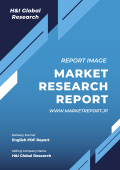目次
第1章 グローバル工業用清掃化学品市場レポートの範囲と方法論
1.1. 研究目的
1.2. 研究方法論
1.2.1. 予測モデル
1.2.2. デスクリサーチ
1.2.3. トップダウンとボトムアップアプローチ
1.3. 研究属性
1.4. 研究の範囲
1.4.1. 市場定義
1.4.2. 市場セグメンテーション
1.5. 研究の仮定
1.5.1. 包含と除外
1.5.2. 制限事項
1.5.3. 調査対象期間
第2章 執行要約
2.1. CEO/CXOの視点
2.2. 戦略的洞察
2.3. ESG分析
2.4. 主要な発見
第3章. グローバル工業用清掃化学品市場動向分析
3.1. グローバル工業用清掃化学品市場を形作る市場要因(2024–2035)
3.2. 推進要因
3.2.1. 環境配慮型および生分解性化学品ソリューションの需要増加
3.2.2. 急速な工業化と厳格な職場衛生基準
3.3. 制約
3.3.1. 原材料価格の変動
3.3.2. 特定の化学組成に関する健康と環境への懸念
3.4. 機会
3.4.1. 産業分野における自動清掃システムの採用拡大
3.4.2. 酵素ベースおよび低VOC洗浄剤の配合技術革新
第4章 グローバル工業用清掃化学品産業分析
4.1. ポーターの5つの力モデル
4.1.1. 買い手の交渉力
4.1.2. 供給者の交渉力
4.1.3. 新規参入の脅威
4.1.4. 代替品の脅威
4.1.5. 競合企業の競争
4.2. ポーターの5つの力予測モデル(2024–2035)
4.3. PESTEL分析
4.3.1. 政治
4.3.2. 経済的
4.3.3. 社会
4.3.4. 技術的
4.3.5. 環境
4.3.6. 法的
4.4. 主要な投資機会
4.5. 主要な成功戦略(2025年)
4.6. 市場シェア分析(2024–2025)
4.7. グローバル価格分析と動向(2025年)
4.8. 分析家の推奨事項と結論
第5章. グローバル工業用清掃化学品市場規模と予測(原料タイプ別)2025–2035
5.1. 市場概要
5.2. 界面活性剤
5.2.1. 主要国別内訳推計と予測(2024–2035)
5.2.2. 地域別市場規模分析、2025–2035
5.3. 溶剤
5.4. キレート剤
5.5. pH調整剤
5.6. 溶解助剤/水和剤
5.7. 酵素
第6章. グローバル工業用洗浄化学品市場規模と製品タイプ別予測(2025年~2035年)
6.1. 市場概要
6.2. (オプションのサブセグメントを追加可能:汎用洗浄剤、消毒剤など)
第7章. グローバル工業用洗浄化学品市場規模および予測(用途別)2025–2035
7.1. 市場概要
7.2. (オプションのサブセグメントには、製造、食品加工、医療、自動車など)
第8章. グローバル工業用清掃化学品市場規模と地域別予測(2025~2035年)
8.1. グローバル地域別市場概要
8.2. 主要なリーダー企業と新興国
8.3. 北米工業用清掃化学品市場
8.3.1. アメリカ合衆国
8.3.1.1. 原料タイプ別市場規模と予測(2025–2035年)
8.3.1.2. 製品タイプ別市場規模と予測(2025年~2035年)
8.3.1.3. 用途別市場規模と予測(2025年~2035年)
8.3.2. カナダ
8.3.2.1. 原料の種類別市場規模と予測(2025年~2035年)
8.3.2.2. 製品タイプ別市場規模と予測(2025年~2035年)
8.3.2.3. 用途別市場規模と予測(2025年~2035年)
8.4. 欧州工業用清掃化学品市場
8.4.1. イギリス
8.4.2. ドイツ
8.4.3. フランス
8.4.4. スペイン
8.4.5. イタリア
8.4.6. その他のヨーロッパ
8.5. アジア太平洋地域工業用清掃化学品市場
8.5.1. 中国
8.5.2. インド
8.5.3. 日本
8.5.4. オーストラリア
8.5.5. 韓国
8.5.6. アジア太平洋地域その他
8.6. ラテンアメリカ工業用清掃化学品市場
8.6.1. ブラジル
8.6.2. メキシコ
8.7. 中東・アフリカ地域工業用清掃化学品市場
8.7.1. アラブ首長国連邦
8.7.2. サウジアラビア
8.7.3. 南アフリカ
8.7.4. 中東・アフリカその他の地域
第9章 競合分析
9.1. 主要な市場戦略
9.2. BASF SE
9.2.1. 当社概要
9.2.2. 主要な経営陣
9.2.3. 会社の概要
9.2.4. 財務実績(データ入手状況により異なります)
9.2.5. 製品/サービスポートフォリオ
9.2.6. 最近の動向
9.2.7. 市場戦略
9.2.8. SWOT分析
9.3. クロダ・インターナショナル・プラシッド
9.4. ハリバートン・カンパニー
9.5. ベイカー・ヒューズ・カンパニー
9.6. シュルンベルジェ・リミテッド
9.7. シェブロン・フィリップス・ケミカル・カンパニー
9.8. トリカン・ウェル・サービス・リミテッド
9.9. M&D インダストリーズ・オブ・ルイジアナ・インク
9.10. オビン・グループ
9.11. インパクト・フルイド・ソリューションズ
9.12. ダウ・ケミカル・カンパニー
9.13. ソルベイ・エス・エー
9.14. ステパン・カンパニー
9.15. エボニック・インダストリーズAG
9.16. エコラブ・インク
9.12. ダウ・ケミカル・カンパニー
表の一覧
表1. グローバル工業用洗浄化学品市場、レポートの範囲
表2. グローバル工業用清掃化学品市場の見積もりおよび予測(地域別)2024–2035
表3. グローバル工業用清掃化学品市場規模推計と予測(原料タイプ別)2024–2035
表4. グローバル工業用清掃化学品市場規模推計と予測(製品タイプ別)2024–2035
表5. グローバル工業用清掃化学品市場規模推計と予測(用途別)2024–2035
表6. 米国工業用清掃化学品市場規模予測(2024–2035年)
表7. カナダ工業用清掃化学品市場規模予測(2024–2035年)
表8. イギリス工業用清掃化学品市場規模推計と予測(2024–2035年)
表9. ドイツの工業用清掃化学品市場規模推計と予測(2024~2035年)
表10. フランス工業用清掃化学品市場規模予測(2024年~2035年)
表11. スペインの工業用清掃化学品市場規模予測(2024~2035年)
表12. イタリアの工業用清掃化学品市場推定値と予測、2024–2035
表13. 欧州その他の地域 工業用清掃化学品市場規模予測(2024年~2035年)
表14. 中国の工業用清掃化学品市場規模推計と予測(2024~2035年)
表15. インドの工業用清掃化学品市場規模推計と予測(2024年~2035年)
表16. 日本の工業用清掃化学品市場規模推計と予測(2024~2035年)
表17. オーストラリアの工業用清掃化学品市場規模予測(2024年~2035年)
表18. 韓国の工業用清掃化学品市場規模推計と予測(2024年~2035年)
表19. アジア太平洋地域(APAC)残りの地域 工業用清掃化学品市場規模推計と予測、2024–2035
表20. ブラジル工業用清掃化学品市場規模推計と予測(2024年~2035年)
表21. メキシコ工業用清掃化学品市場規模推計と予測(2024年~2035年)
表22. アラブ首長国連邦(UAE)の工業用清掃化学品市場推定値と予測、2024–2035
表23. サウジアラビアの工業用清掃化学品市場規模予測(2024年~2035年)
表24. 南アフリカ工業用清掃化学品市場規模推計と予測(2024~2035年)
表25. 中東・アフリカその他の地域 工業用清掃化学品市場規模推計と予測(2024年~2035年)
図表一覧
図1. グローバル工業用清掃化学品市場、調査方法論
図2. グローバル工業用清掃化学品市場、市場推計手法
図3. グローバル市場規模推計および予測手法
図4. グローバル工業用清掃化学品市場、2025年の主要動向
図5. グローバル工業用清掃化学品市場、成長見通し 2024–2035
図6. グローバル工業用清掃化学品市場、ポーターの5つの力モデル
図7. グローバル工業用清掃化学品市場、PESTEL分析
図8. グローバル工業用清掃化学品市場、バリューチェーン分析
図9. 工業用清掃化学品市場(原料タイプ別)、2025年と2035年
図10. 工業用清掃化学品市場(製品タイプ別)、2025年と2035年
図11. 工業用清掃化学品市場(用途別)、2025年と2035年
図12. 北米工業用清掃化学品市場、2025年と2035年
図13. 欧州工業用洗浄化学品市場、2025年および2035年
図14. アジア太平洋地域工業用清掃化学品市場、2025年および2035年
図15. ラテンアメリカ工業用清掃化学品市場、2025年と2035年
図16. 中東・アフリカ地域 工業用清掃化学品市場、2025年と2035年
図17. グローバル工業用洗浄化学品市場、企業別市場シェア分析(2025年)
Chapter 1. Global Industrial Cleaning Chemicals Market Report Scope & Methodology
1.1. Research Objective
1.2. Research Methodology
1.2.1. Forecast Model
1.2.2. Desk Research
1.2.3. Top Down and Bottom-Up Approach
1.3. Research Attributes
1.4. Scope of the Study
1.4.1. Market Definition
1.4.2. Market Segmentation
1.5. Research Assumption
1.5.1. Inclusion & Exclusion
1.5.2. Limitations
1.5.3. Years Considered for the Study
Chapter 2. Executive Summary
2.1. CEO/CXO Standpoint
2.2. Strategic Insights
2.3. ESG Analysis
2.4. Key Findings
Chapter 3. Global Industrial Cleaning Chemicals Market Forces Analysis
3.1. Market Forces Shaping The Global Industrial Cleaning Chemicals Market (2024–2035)
3.2. Drivers
3.2.1. Increasing demand for environment-friendly and biodegradable chemical solutions
3.2.2. Rapid industrialization and strict workplace hygiene mandates
3.3. Restraints
3.3.1. Volatility in raw material prices
3.3.2. Health and environmental concerns regarding certain chemical compositions
3.4. Opportunities
3.4.1. Rising adoption of automated cleaning systems in industrial sectors
3.4.2. Innovations in enzyme-based and low-VOC cleaning formulations
Chapter 4. Global Industrial Cleaning Chemicals Industry Analysis
4.1. Porter’s 5 Forces Model
4.1.1. Bargaining Power of Buyer
4.1.2. Bargaining Power of Supplier
4.1.3. Threat of New Entrants
4.1.4. Threat of Substitutes
4.1.5. Competitive Rivalry
4.2. Porter’s 5 Force Forecast Model (2024–2035)
4.3. PESTEL Analysis
4.3.1. Political
4.3.2. Economical
4.3.3. Social
4.3.4. Technological
4.3.5. Environmental
4.3.6. Legal
4.4. Top Investment Opportunities
4.5. Top Winning Strategies (2025)
4.6. Market Share Analysis (2024–2025)
4.7. Global Pricing Analysis And Trends 2025
4.8. Analyst Recommendation & Conclusion
Chapter 5. Global Industrial Cleaning Chemicals Market Size & Forecasts by Ingredient Type 2025–2035
5.1. Market Overview
5.2. Surfactants
5.2.1. Top Countries Breakdown Estimates & Forecasts, 2024–2035
5.2.2. Market size analysis, by region, 2025–2035
5.3. Solvents
5.4. Chelating Agents
5.5. pH Regulators
5.6. Solubilizers/Hydrotropes
5.7. Enzymes
Chapter 6. Global Industrial Cleaning Chemicals Market Size & Forecasts by Product Type 2025–2035
6.1. Market Overview
6.2. (Optional sub-segments can be added like General Purpose Cleaners, Disinfectants, etc.)
Chapter 7. Global Industrial Cleaning Chemicals Market Size & Forecasts by Application 2025–2035
7.1. Market Overview
7.2. (Optional sub-segments can include Manufacturing, Food Processing, Healthcare, Automotive, etc.)
Chapter 8. Global Industrial Cleaning Chemicals Market Size & Forecasts by Region 2025–2035
8.1. Global Regional Market Snapshot
8.2. Top Leading & Emerging Countries
8.3. North America Industrial Cleaning Chemicals Market
8.3.1. U.S.
8.3.1.1. Ingredient Type breakdown size & forecasts, 2025–2035
8.3.1.2. Product Type breakdown size & forecasts, 2025–2035
8.3.1.3. Application breakdown size & forecasts, 2025–2035
8.3.2. Canada
8.3.2.1. Ingredient Type breakdown size & forecasts, 2025–2035
8.3.2.2. Product Type breakdown size & forecasts, 2025–2035
8.3.2.3. Application breakdown size & forecasts, 2025–2035
8.4. Europe Industrial Cleaning Chemicals Market
8.4.1. UK
8.4.2. Germany
8.4.3. France
8.4.4. Spain
8.4.5. Italy
8.4.6. Rest of Europe
8.5. Asia Pacific Industrial Cleaning Chemicals Market
8.5.1. China
8.5.2. India
8.5.3. Japan
8.5.4. Australia
8.5.5. South Korea
8.5.6. Rest of Asia Pacific
8.6. Latin America Industrial Cleaning Chemicals Market
8.6.1. Brazil
8.6.2. Mexico
8.7. Middle East & Africa Industrial Cleaning Chemicals Market
8.7.1. UAE
8.7.2. Saudi Arabia
8.7.3. South Africa
8.7.4. Rest of Middle East & Africa
Chapter 9. Competitive Intelligence
9.1. Top Market Strategies
9.2. BASF SE
9.2.1. Company Overview
9.2.2. Key Executives
9.2.3. Company Snapshot
9.2.4. Financial Performance (Subject to Data Availability)
9.2.5. Product/Services Port
9.2.6. Recent Development
9.2.7. Market Strategies
9.2.8. SWOT Analysis
9.3. Croda International Plc.
9.4. Halliburton Company
9.5. Baker Hughes Company
9.6. Schlumberger Limited
9.7. Chevron Phillips Chemical Company
9.8. Trican Well Service Ltd.
9.9. M&D Industries Of Louisiana, Inc.
9.10. Aubin Group
9.11. Impact Fluid Solutions
9.12. The Dow Chemical Company
9.13. Solvay S.A.
9.14. Stepan Company
9.15. Evonik Industries AG
9.16. Ecolab Inc.
*** 免責事項 ***
https://www.globalresearch.co.jp/disclaimer/











